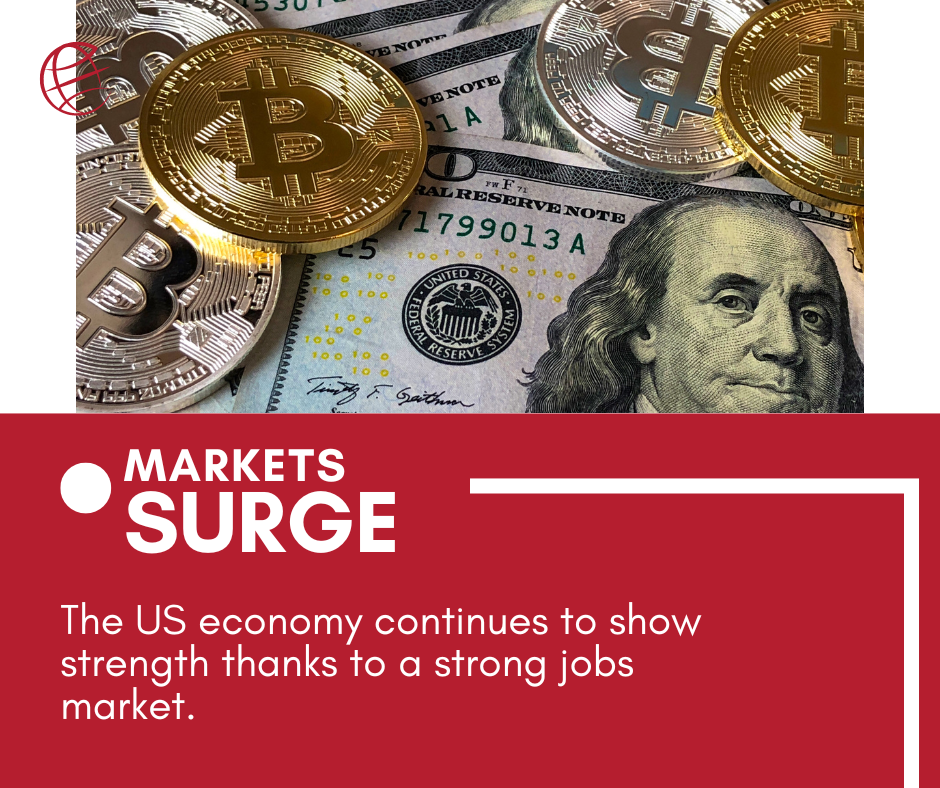|
Audio Version
Getting your Trinity Audio player ready...
|
The Dow Jones Industrial Average and the S&P 500 closed at record highs as the US economy continues to show signs of strength. The Dow gained nearly 400 points on Friday, closing the week on a high after an up-and-down start to the year.
What’s Driving The Economy?
The Friday surge came after initial unemployment claims dropped by 16,000 to a seasonally adjusted 187,000. This was the lowest reading since September of 2022. The four-week average dropped by nearly 5,000.
These figures show that the US still has a very strong jobs market, despite repeated predictions of a recession. The market has remained strong in the face of multiple interest rate increases by the Federal Reserve, surprising most mainstream economists.
The strong jobs market is driving the US economy against the headwinds. After struggling to get and retain workers in the pandemic era, employers are reluctant to let good employees go. With the exception of Silicon Valley, which likely overhired during the work-from-home period, job growth has remained robust.
How Is The Jobs Market Maintaining Such Strength?
There are multiple factors keeping the job market at full capacity. As mentioned earlier, employers had a difficult time getting and keeping employees during COVID-19. There were more openings than workers available.
The worker shortage can mostly be blamed on demographics. The baby boomer generation has begun retiring, leaving a void the next generation simply can’t fill.
One can’t discount over one million deaths caused by the coronavirus as well. Most of these were elderly, but a huge chunk was working age.
The shortage of workers led to rising wages. Many blamed this for the rise in inflation, but the bigger reason was supply chain issues tied to the pandemic. Once those subsided, inflation slowed. Those higher wages then helped keep demand strong, and the economy with it.
Furthermore, stimulus spending by the Trump and Biden administration led to demand that could not be completely satisfied during the pandemic due to shutdowns and a lack of workers. That demand was stretched out over a longer period of time than it would have done so naturally.
Will We Have A Recession In 2024?
As of now, the outlook for 2024 remains positive. The US economy is enjoying full employment with no signs of slowing down. Inflation has cooled to acceptable levels and appears certain to reach the Fed’s target of 2% over the next year or so.
Cooling inflation has led to the Fed halting their interest rate hikes. In fact, rate cuts should be coming by the third quarter. It appears the Fed has nailed the soft landing they coveted.
While the outlook is sunny, there are potential pitfalls that could throw a wrench into everything. The biggest concern is instability in the Middle East. Any disruptions to oil production would have a ripple effect through the global economy, and the US is no exception.
The 2024 election is sure to sway markets with each headline. There have already been several battles over passing a budget, and they are likely to intensify as we get closer to the election.
However, the positives look to outweigh the negatives for now. With inflation on the downswing, the US could be in for a great 2024.
